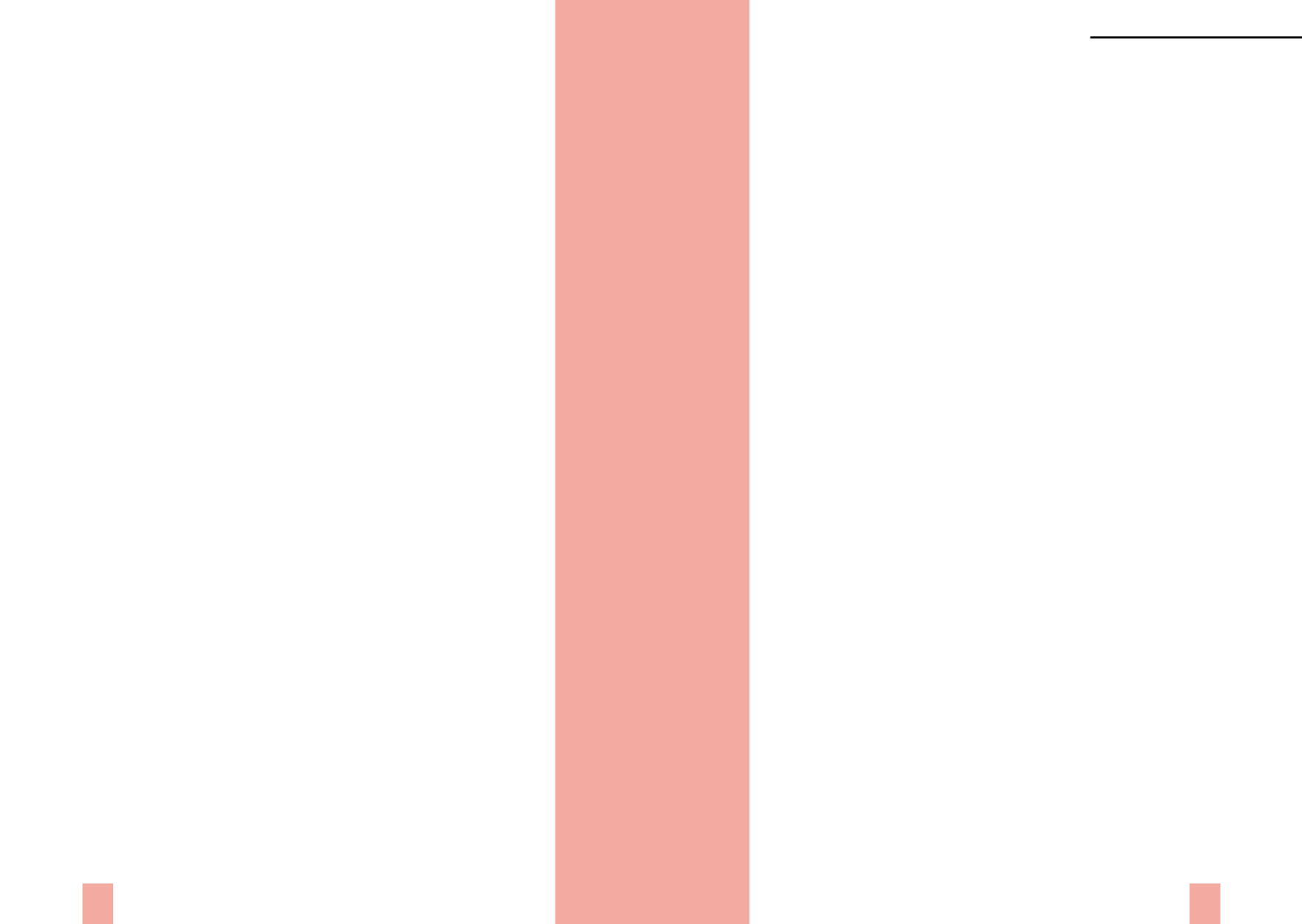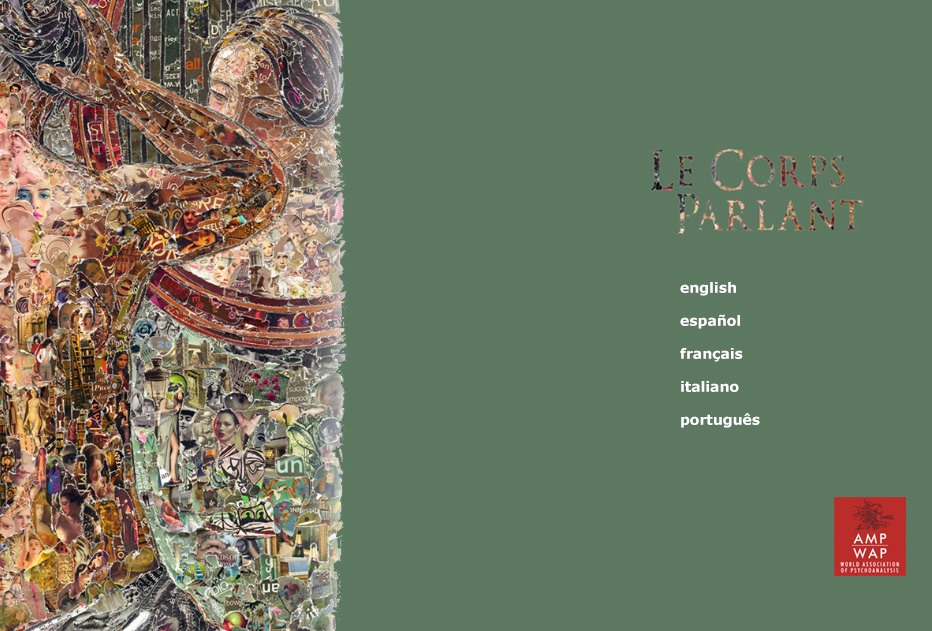

THE SPEAKING BODY
Xth Congress of the WAP,
Rio de Janeiro 2016
531
530
Laurent, Èric [2005].
Chomsky with Joyce
[LIC, 2014]
“For Lacan, the body is not kitted out with these strange, modularised organs,
it is kitted out with the
sinthome
. This is what has consistency, even though it is
articulated with the hole in the symbolic.”
p. 11
Laurent, Éric [2006].
The Psychopathy of Evaluation
[LIC, 2014]
“The superego says
Jouis!
[“Enjoy!”] and the Other’s signifiers turn out to be
implicated because the subject replies
J’ouïs!
[“I hear!”]. The parasite of language,
which is the other as such, traumatizes the body, it gives rise to the parlêtre’s
jouissance and the encounter therewith in the symptom or sinthome.”
p. 88
Laurent, Éric.
Speaking Through One’s Symptom, Speaking Through
One’s Body
[2013]. Trans.: A.R. Price [HB 11, 2014]
“Psychoanalysis formed its grasp of the join between words and bodies from one
precise angle: that of the symptom. (…) As the presence of the signifier of the
Other in oneself, a symptom is a marking, a cutting. At this site there occurs
a traumatic upsurge of jouissance. Starting with the symptoms of hysterics,
Freud came to recognise the path by which the perturbation of the body occurs.
Through words, it performs a new slicing and marking out of the paths by
which jouissance arises.
We have to conceive of the symptom not on the basis of belief in the Name-of-
the-Father, but on the basis of the efficacy of psychoanalytic practice. Through
its handling of truth, this practice obtains something that touches on the real.
Something resonates in the body from the angle of the symbolic, and this
compels the symptom to respond.”
p. 139
Linardou, Nassia.
Anne Sexton: The Poet and Death
. Trans.: J. Stone
[RT 6, 2011]
“
Flee on your Donkey
is the poem in which she draws on this experience. What
she has in her pocket is the literal materiality of the little slip of paper; it
supports no message from the Other. It does not call forth meaning [le sens]
from the Other, but, beyond the true and the false, it invites a treatment of the
impossible separation, it sketches a fragile edge.
There where in an analysis poetic interpretation tends to empty the transference
of meaning, Anne Sexton made of the transference, which she came to qualify
as a swindle, the condition of her poetic enterprise. Poetry functioned there as a
sinthome
, as a reconfiguration by which one cannot say that
jouissance
takes on a
meaning, not necessarily at least, but a re-engineering that permitted her to pass
from discomfort to satisfaction during the years that she wrote.”
p. 92-93
Lysy-Stevens, Anne. Interpretation
, Semblant
, and
Sinthome.
Trans.:
E. Ragland and J. Stone [RT 6, 2011]
“One can only stress, as J.-A Miller has done, that Lacan puts the accent
on the elementary unities which precede any S1 – S2 articulation. The
whole conceptual renewal of this last teaching is clarified by this:
lalangue
,
speaking being [
parlêtre
],
sinthome
, a-blunder [
une-bévue
], are so many of the
concepts that are substituted for those of language, subject, symptom, and the
unconscious by this displacement of the accent on the Other toward the One;
on the prevalence of the structure S1 → S2 toward the falling-short-of [
sense
]
[
l’en deçà
] the materiality of the ‘all alone’; on the connection, which induces
sense, to the disconnection S1 – S2, which abolishes the effect of sense. (…)
Is interpretation still an adequate term when it is no longer a deciphering, an
application of the structure S1 – S2, relay of the formations of the unconscious?
What is interpretation when the point of departure is no longer language, but
lalangue
, when what is aimed for is no longer the revelation of unconscious
truth or of the sense of symptoms, but the kernel of
jouissance
included in the
fantasy, the
sinthome
as a singular mode of enjoying? We need a new word to
designate this ‘post-interpretive practice,’ he seems to suggest by his repeated
questions on this subject in those last years; for, in fact,
interpretation will never
again be what it was. The age of interpretation, the age when Freud upset the
universal discourse by interpretation, is closed.
”
p. 43-44
Naveau, Laure.
The Symptom at the End of an Analysis
, Editorial P.
Dravers [PN 24, 2012]
“In March 2011, in his fifth lecture, J.-A. Miller returned to the theme of the
sinthome at the end of analysis and emphasised what he called ‘the supremacy of
inertia’, that is to say, what does not change. (…) Before the sinthome, the Pass
was based on the idea that a revelation, the disclosure of a truth, would have
consequences on the real. The fall of the object a detaches the subject from his
window on the real, from what gives meaning to the real. By contrast, from the
perspective of the sinthome, the Pass leaves the real untouched, what Jacques-
Alain Miller has called ‘the root of repression’. The effect on the window, which
gives a view on the real, on the scenario of the fantasy, and on what gives a
meaning to reality, leaves the real of
jouisssance
unchanged. (…) One has to cope
with the remains of
jouissance
.”
p. 54
“In his last teaching, Lacan explored, by means of his logical formulas, the
(Lacanian) field of
jouissance
. There is, for everyone, a beyond of the Oedipus
complex and the object a as a semblant. Lacan calls this beyond: ‘the sinthome.’
The sinthome is a fact which is linked with the body and which cannot be
Authors of the Freudian Field



















